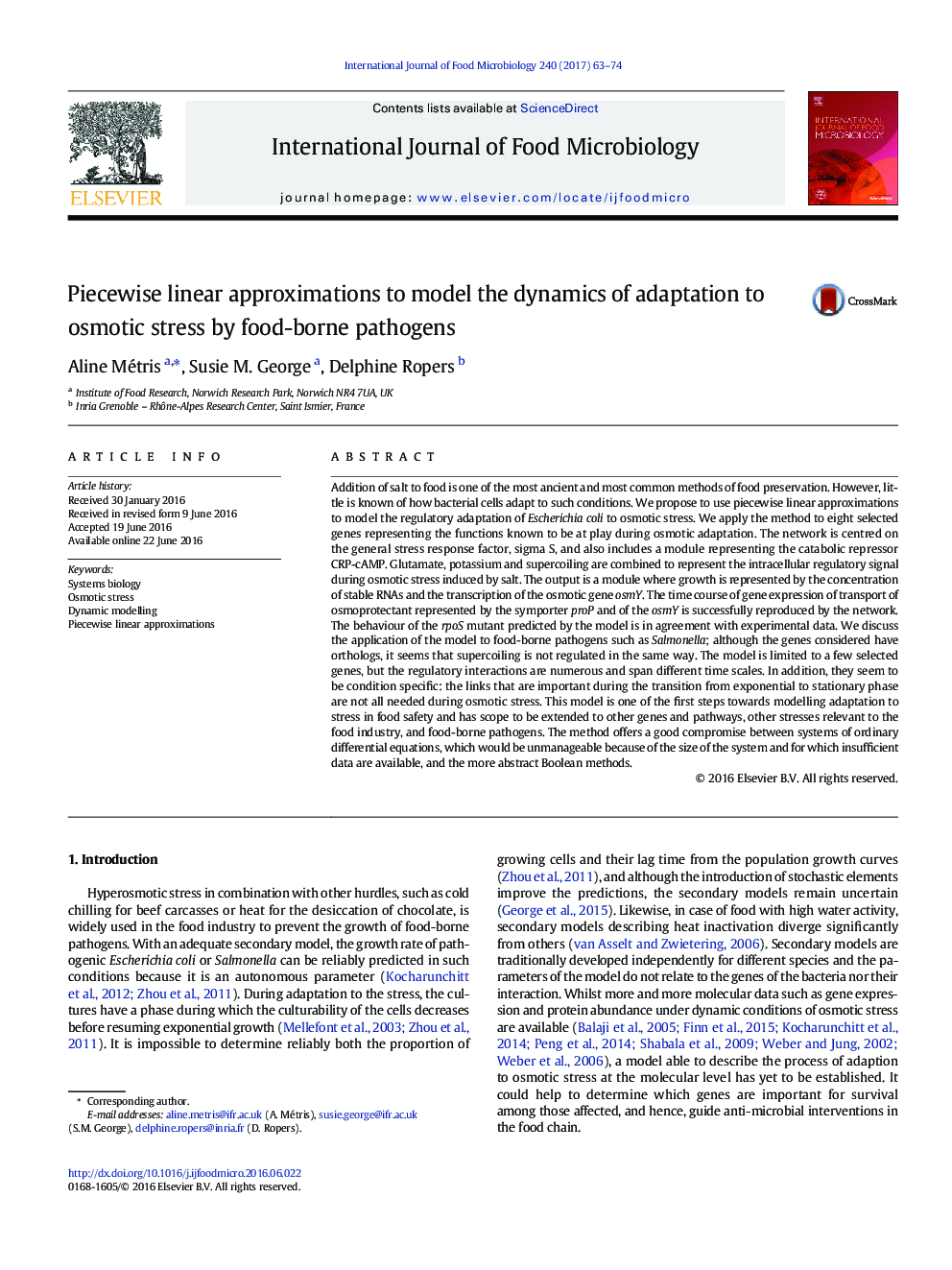| کد مقاله | کد نشریه | سال انتشار | مقاله انگلیسی | نسخه تمام متن |
|---|---|---|---|---|
| 5740895 | 1616543 | 2017 | 12 صفحه PDF | دانلود رایگان |
- We reconstructed a regulatory network of adaptation of E. coli to high NaCl level.
- Piecewise linear approximations were able to reproduce osmotic gene expression.
- Predicted rpoS mutant behaviour was in agreement with experimental data.
- The network, centred on the sigma S factor, may be extended to other stresses.
Addition of salt to food is one of the most ancient and most common methods of food preservation. However, little is known of how bacterial cells adapt to such conditions. We propose to use piecewise linear approximations to model the regulatory adaptation of Escherichia coli to osmotic stress. We apply the method to eight selected genes representing the functions known to be at play during osmotic adaptation. The network is centred on the general stress response factor, sigma S, and also includes a module representing the catabolic repressor CRP-cAMP. Glutamate, potassium and supercoiling are combined to represent the intracellular regulatory signal during osmotic stress induced by salt. The output is a module where growth is represented by the concentration of stable RNAs and the transcription of the osmotic gene osmY. The time course of gene expression of transport of osmoprotectant represented by the symporter proP and of the osmY is successfully reproduced by the network. The behaviour of the rpoS mutant predicted by the model is in agreement with experimental data. We discuss the application of the model to food-borne pathogens such as Salmonella; although the genes considered have orthologs, it seems that supercoiling is not regulated in the same way. The model is limited to a few selected genes, but the regulatory interactions are numerous and span different time scales. In addition, they seem to be condition specific: the links that are important during the transition from exponential to stationary phase are not all needed during osmotic stress. This model is one of the first steps towards modelling adaptation to stress in food safety and has scope to be extended to other genes and pathways, other stresses relevant to the food industry, and food-borne pathogens. The method offers a good compromise between systems of ordinary differential equations, which would be unmanageable because of the size of the system and for which insufficient data are available, and the more abstract Boolean methods.
Journal: International Journal of Food Microbiology - Volume 240, 2 January 2017, Pages 63-74
